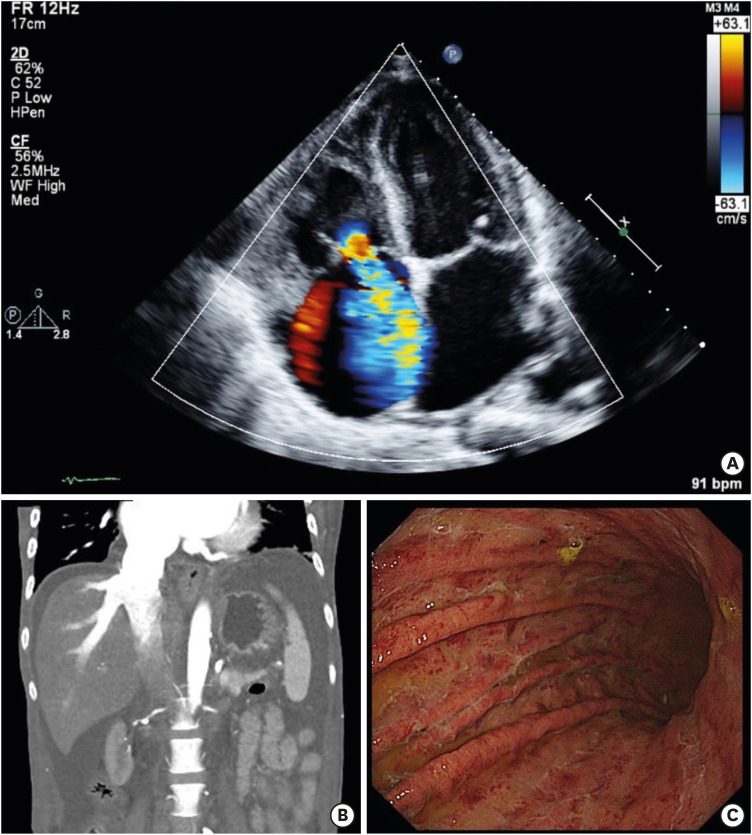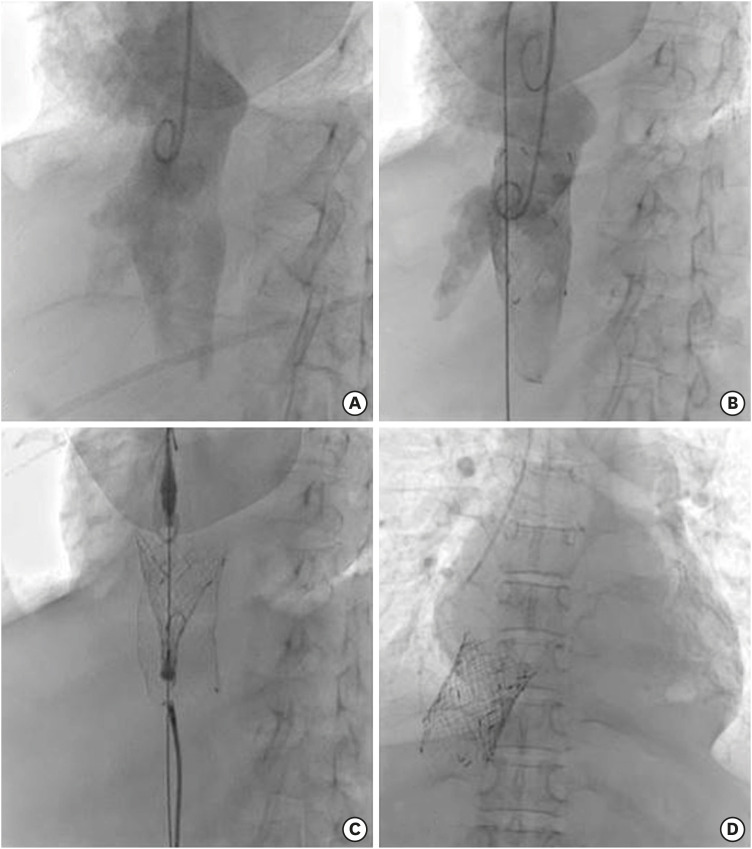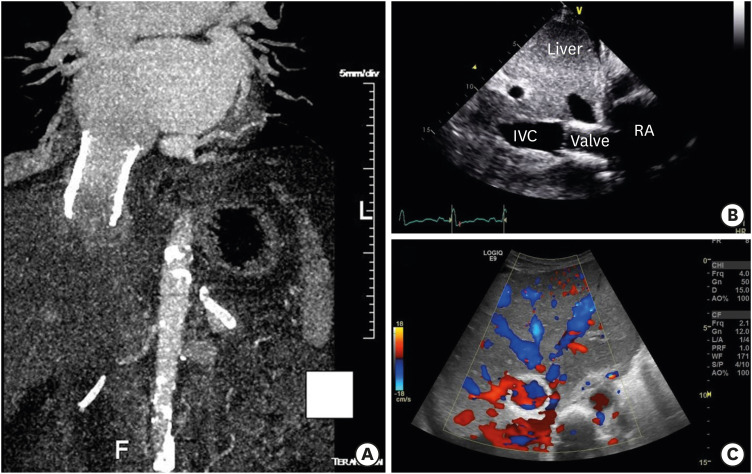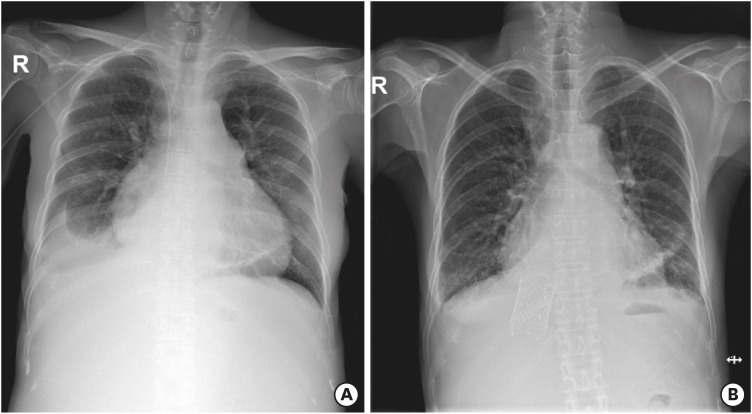Korean Circ J.
2022 Mar;52(3):246-250. 10.4070/kcj.2021.0392.
The First Application of Transcatheter Caval Valve Implantation for Severe Tricuspid Regurgitation in a Patient With High Surgical Risk
- Affiliations
-
- 1Division of Cardiology, Department of Internal Medicine, Incheon St. Mary’s Hospital, College of Medicine, The Catholic University of Korea, Incheon, Korea
- 2Division of Cardiology, Department of Internal Medicine, Seoul St. Mary’s Hospital, College of Medicine, The Catholic University of Korea, Seoul, Korea
- KMID: 2526961
- DOI: http://doi.org/10.4070/kcj.2021.0392
Abstract
- No abstract available.
Figure
Reference
-
1. Lauten A, Figulla HR, Unbehaun A, et al. Interventional treatment of severe tricuspid regurgitation: early clinical experience in a multicenter, observational, first-in-man study. Circ Cardiovasc Interv. 2018; 11:e006061. PMID: 29445001.2. O’Neill B, Wang DD, Pantelic M, et al. Transcatheter caval valve implantation using multimodality imaging: roles of TEE, CT, and 3D printing. JACC Cardiovasc Imaging. 2015; 8:221–225. PMID: 25677894.
- Full Text Links
- Actions
-
Cited
- CITED
-
- Close
- Share
- Similar articles
-
- TricValve in Severe Tricuspid Regurgitation: A Case Series Illustrating The Role of CT Angiography and Treatment Outcome
- Permanent Pacemaker Lead Induced Severe Tricuspid Regurgitation in Patient Undergoing Multiple Valve Surgery
- Tricuspid Valve Imaging and Right Ventricular Function Analysis Using Cardiac CT and MRI
- Repair of Posttraumatic Tricuspid Regurgitation Using Artificial Chordae and an Annuloplasty Ring
- A Case of Severe Aortic Stenosis Patient With High Operative Risk Treated by Transcatheter Aortic-Valve Implantation





